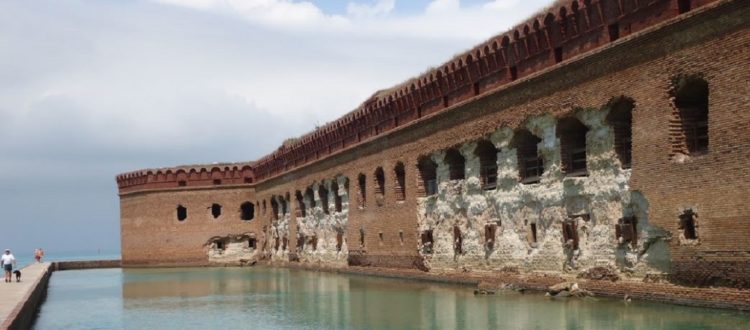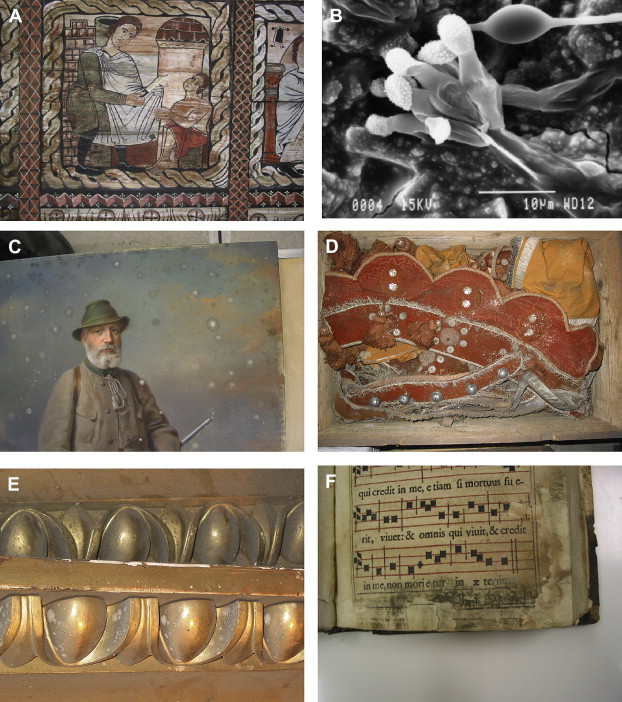Material Vulnerability & Climate Change
Historic structures were built to withstand the weather conditions of their immediate environments – but what happens when climate patterns change and sea levels rise? Researchers in the new field of heritage climatology, which studies the impacts of climate change on cultural heritage, are working to answer this question with experiments on the effects of changing precipitation patterns, temperature, humidity, sea level rise, increasing storm activity and other climatic factors.
For those working to protect cultural heritage from climate change, the first step is usually to take an inventory of resources and determine how each is at risk. When overlaid with climate change projections, data on wood, masonry, brick, adobe, plaster, and other material vulnerability helps managers prioritize which sites and structures are most at risk.The list below gives you a sense of the scale and diversity of material risk.
- Increasing temperatures
- Higher temperatures may increase lichen, fungi, and plant growth and accompanying damages to structures.
- Wooden objects and structures are especially susceptible to fungal growth from the combination of increased temperature, precipitation, and humidity.
- Increased risk of wildfires may directly threaten structures, or indirectly threaten structures through smoke exposure.
- Sea-level rise impacts
- Salt water inundation of coastal sites may cause corrosion or decay of metals and other materials.
- Cracks and other structural issues may appear as soil becomes waterlogged or subsides.
- Flooding of roads may make repairs challenging or sites inaccessible.
- Increasing rain
- More intense storms with larger rain droplets will create more splash, runoff and erosion on brick and masonry structures.
- Unfired brick is particularly susceptible to erosion.
- Historic hand-cut clay bricks are particularly likely to retain moisture after getting wet.
- Flooding impacts
- Storm surge or wave action can directly impact structures and may be compounded by higher daily sea levels.
- Electrical utilities within the flood zone may be damaged or rendered useless.
- Flooded generators may not work during storms, leaving collections materials exposed to temperature and humidity changes during storms.
- With site specific information on each area of impact, managers can then determine the best adaptation plan. These plans may include dramatic actions such as raising or moving buildings, or a more modest approach such as installing basement dehumidifiers or moving generators above flood lines. Climate change can seem like an impending apocalypse for historic structures, but small steps like assessing vulnerability and creating adaption solutions are the building blocks to a responsible reaction.
-
Header image courtesy of the National Park Service.
-
For more information on climate change impacts on cultural heritage in the United States, please see NPS Cultural Resource Impacts Table.
For more information on precipitation, see Adan and Van Hees, “Evaluation of the Effects of Expected Climate Change…,” 2009
For more information on fungal growth, see Katja Sterflinger, “Fungi: Their role in deterioration of cultural heritage,” 2010.
For more information on rain impacts, see Erkal, D’Ayala and Sequeria, “Assessment of Wind-driven Rain Impact…,” 2012.
For more information on submerged cultural resources, see Jeneva Wright, “Maritime Archaeology and Climate Change: An Invitation,” 2016.




